Choose the Perfect Pair of Swimming Goggles
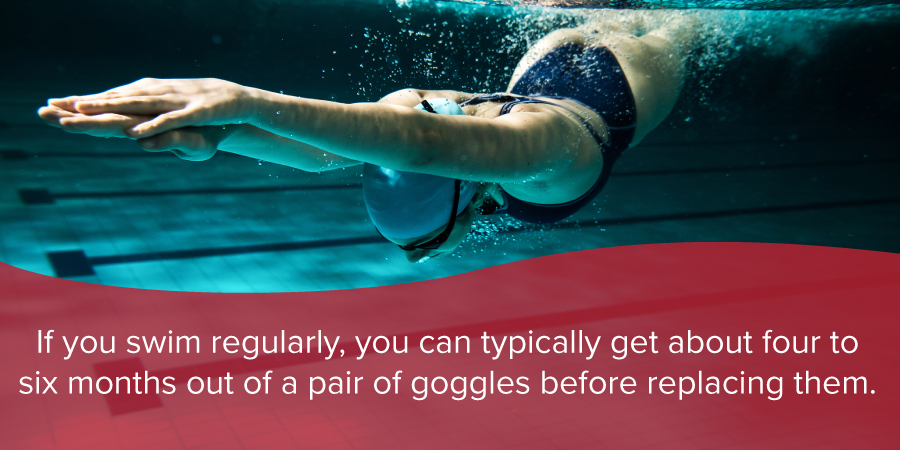
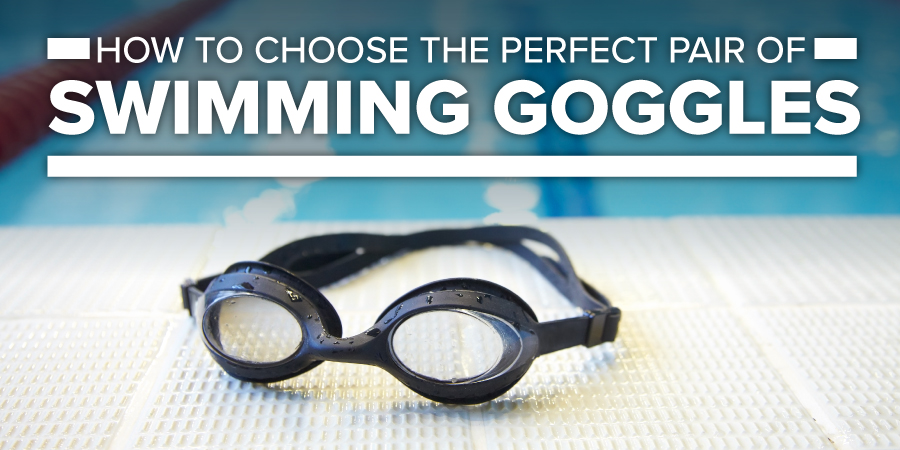
Whether you swim for exercise or you swim competitively, swimming goggles are one of the few pieces of equipment you need to make swimming easier. They keep your eyes dry and can block bright light, depending on the type you choose. With so many options available, selecting your first pair of swimming goggles can feel intimidating, but understanding the basics helps you sort through the types. Keep reading to learn how to choose the right pair of swimming goggles for your needs and personal preferences.
Why Are Goggles Important?
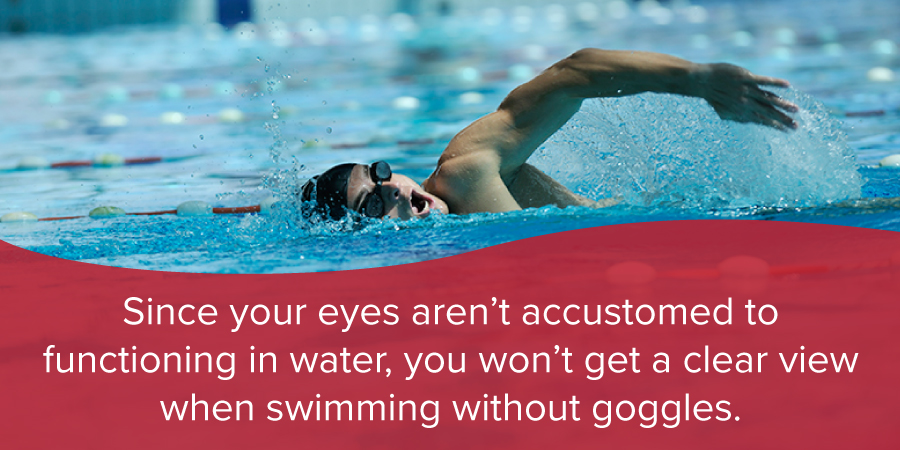
If you’re new to swimming, you may wonder, “Do I need to wear goggles?” The answer to that question is yes. You really do need swimming goggles if you plan to swim on a regular basis. They not only make swimming easier, but they provide protection as well.
Check out these main reasons to wear swimming goggles when you hit the pool:
- Eye protection: Your eyes aren’t designed for underwater use. A pair of swimming goggles that fit properly keep the water away from your eyes, reducing irritation, especially in a chemical-filled pool. The pool water can have other contaminants including cosmetics, urine, sweat and mucus. Wearing goggles can reduce eye discomfort and eliminate red, bloodshot eyes that can occur when swimming without protection.
- Better focus: Since your eyes aren’t accustomed to functioning in water, you won’t get a clear view when swimming without goggles. Everything appears blurry. Goggles provide a barrier between your eyes and the water. This allows you to focus easily so you are better able to see your target and swim more efficiently. Seeing clearly is particularly helpful when going from under the water to above the water during a stroke. The goggles give you consistent protection and instant focus so you can always see where you are going.
- Specialized purpose: Goggles are available for a variety of eye protection purposes, such as working in areas with lots of dust or flying pieces. Swimming goggles are designed specifically for pool use. This means the designs focus on sealing out water and keeping your eyes dry. Choosing swim goggles specifically ensures you get the best protection in the pool with the needs of a swimmer taken into consideration.
Styles of Goggles
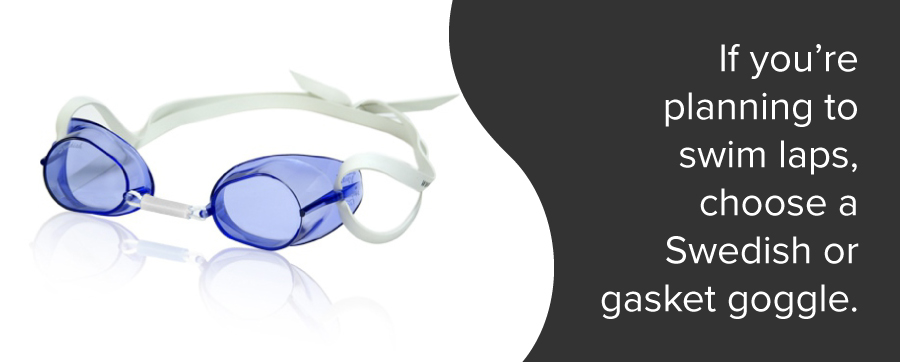
When learning how to buy swimming goggles, one of the first things to know is the difference in swimming goggle styles. All swimming goggles have three basic parts: the frame, the lenses and the strap. The design of each of those parts varies depending on the specific purpose and type of goggles.
Each style comes with different features and technology, but narrowing down the general type of goggles is the first step. Here are the common types of swimming goggles:
- Swedish swim goggles: This style of swimming goggle eliminates the gasket typically found on swim goggles, instead using one solid hard piece to form the lens and frame. Swedish swim goggles sit on the eye socket instead of relying on the suction you get with a gasket. These goggles usually come in parts, which you assemble yourself to get a perfect fit. Once assembled, Swedish swim goggles generally don’t need readjusted. The streamlined design makes these goggles smaller with less drag in the water, making them popular among competitive swimmers. They can feel uncomfortable at first, so newer swimmers may not like the fit of Swedish swimming goggles.
- Gasket swim goggles: A more traditional goggle style uses gaskets around the frames. The gaskets come in many different materials, including silicone, rubber and foam. Silicone is the most popular and is readily available, although some people prefer the feeling of foam. These goggles typically come in both oval and round gasket shapes. Oval gaskets work best for swimmers with smaller facial frames, as they are better suited to the natural eye shape.
- Swim masks: While Swedish and gasket swim goggles feature small lenses that cover each eye individually, a swim mask features a much larger area covering the eyes. This type of eye protection looks like a snorkel mask but without the piece that covers the nose. The much larger, heavier style of swim masks makes them clunky to wear. You won’t move through the water efficiently when wearing a swim mask. They do feel more comfortable than the smaller goggles, which is why some recreational swimmers prefer them. As a general rule, if you’re planning to swim laps, choose a Swedish or gasket goggle.
You can also break down the style of swim goggles by the purpose. The goggles typically fall in either the Swedish or gasket goggle category, with differences in the actual design. Some examples include:
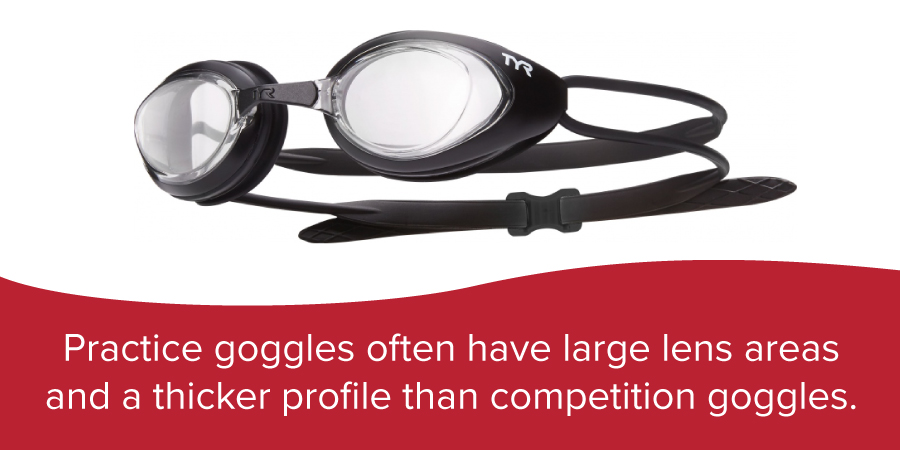
- Competition goggles: Goggles designed for competition typically come in either Swedish or gasket styles. Traits of competition goggles include small lenses that fit snugly around the eye, a low profile and a more technical design. The goal is to create as little drag as possible so you can glide though the water as quickly as possible. Competition goggles aren’t always very comfortable, so many swimmers choose to wear them only during races.
- Practice goggles: Goggles used for practice still offer high-quality eye protection, but they tend to have more padding on the gasket portion. This makes the goggles more comfortable to wear for extended periods, such as long swimming practices. Practice goggles often have large lens areas and a thicker profile than competition goggles. This style offers a balance of performance and comfort, making them a popular choice for serious swimmers.
- Recreational goggles: Even less technical than practice goggles, recreational goggles are really meant for occasional or shorter swimming sessions. They don’t provide the seal and longevity of practice or competition goggles. If the goggles come with an anti-fog layer, it may not last as long as the coating on practice or competition goggles. This type is fine if you only swim once in a while.
Swimming Goggle Lens Types
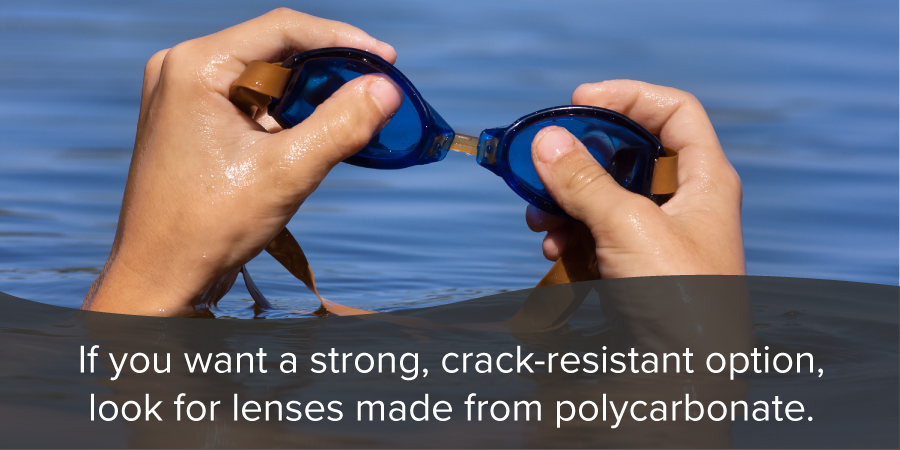
Swimming goggle lenses come in a variety of colors or finishes. Understanding the different types and benefits of each helps you find a lens type that fits your needs. Your usual swimming conditions have the biggest impact on the color and style of lenses you choose.
The lenses of swimming goggles come in different materials, with plastic being a common option. If you want a strong, crack-resistant option, look for lenses made from polycarbonate. These lenses tend to last longer than cheaper plastics.
The color is a major factor in choosing swimming goggle lenses. Consider these colors and their features:
- Clear: Clear lenses let light through without any blocking or shading of your eyes. They work well indoors and in situations when bright lights won’t interfere with your vision. Choose clear lenses if you often swim in low-light or overcast situations where you want to maximize the light that reaches your eyes to give you a better line of vision.
- Amber: Amber-colored lenses offer benefits in both low-light and high-light situations. When light is limited, amber lenses improve your vision, minimizing the interference of the low light. If you’re swimming in a bright environment, amber lenses minimize glare while still providing a sharp, clear view. These colors of lenses work both indoors and outdoors, making them a versatile option if you swim in different locations.
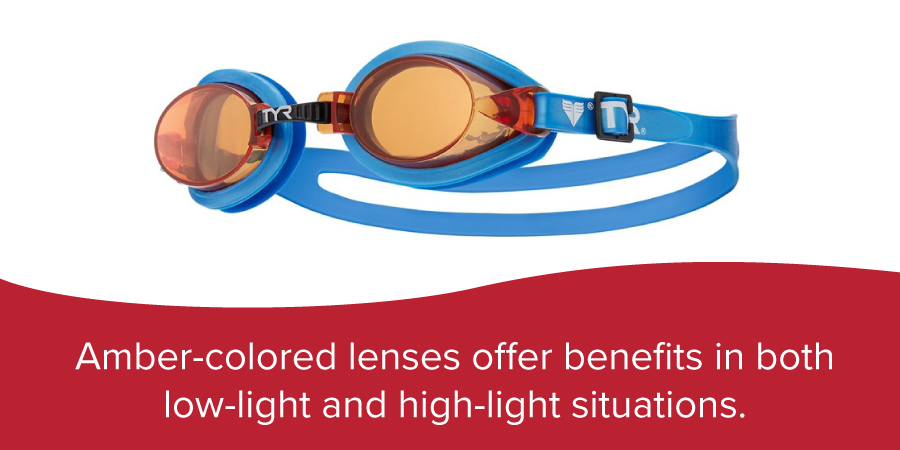
- Smoke gray: If you tend to swim outdoors or in bright environments, consider a darker tint, such as smoke gray, dark blue or black. These darker lenses minimize the impact of glare caused by light reflecting off the water.
- Blue: The blue color option provides a balanced approach to blocking light. Blue lenses still let in some light to allow clear vision. At the same time, the blue lenses block glare from the water.
- Metallic: If you want maximum protection from bright light, opt for a metallic lens type. Also known as mirrored swimming goggles, this style reduces glare and the light level. This makes them ideal for bright outdoor swimming conditions. Swimmers who do the backstroke outdoors especially appreciate the protection of metallic swim goggle lenses. Have an alternative pair of goggles if you sometimes swim indoors or in low-light conditions. Metallic lenses may make it difficult to see where you are going in these conditions because of the dimming effect of the lenses.
- Polarized: Another version that works well in outdoor conditions is a polarized lens. These lenses also help filter the light and minimize glare from the water. Unlike metallic lenses, polarized goggles won’t dim your vision.
- Photochromatic: Swimmers who regularly swim in different light conditions may consider a photochromatic lens. These lenses change colors automatically based on the light level. They get darker as the light level increases, and they return to a lighter color as the light levels decrease. The automatic adjustment makes these goggles very versatile and can reduce eye fatigue when light conditions change regularly.
Anti-fog lenses are also popular on swimming goggles. The idea is that the lenses don’t fog over, which allows you a clear view for your entire swim. Fogging can minimize or completely block your visibility and cause you to stop and clear the lenses. The anti-fog coating usually goes on the inside of the lenses. Over time, the coating tends to wear off and lose its effectiveness. Anti-fog products can be applied to the lenses if they begin fogging over. Higher-end goggles may impregnate the anti-fog treatment into the lenses to prevent wear.
Goggle Size and Fit
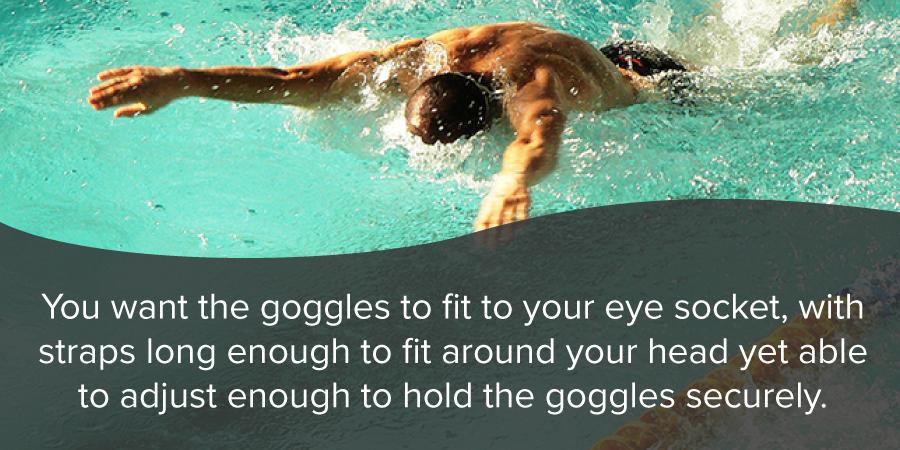
The size and fit are major factors in buying the perfect pair of swim goggles. If the goggles don’t fit properly, they won’t keep the water away from your eyes efficiently, thus defeating the purpose of wearing them. If they aren’t comfortable, you won’t want to wear them.
How should goggles fit? They should feel snug yet comfortable. You want the goggles to fit to your eye socket, with straps long enough to fit around your head yet able to adjust enough to hold the goggles securely.
Goggles typically come with sizing to help you narrow down the options. Companies design goggles specifically for kids, women and men. Check the sizing on various goggles to get an idea of which to choose, but don’t limit yourself. If you have a small face, you may find a pair of kid’s goggles is a better fit than an adult pair. Women may prefer the fit and size of men’s goggles, and some men may feel more comfortable in women’s goggles. Don’t get too caught up in who the goggles are supposed to fit. Focus on how they feel on you.
The size of the lenses and frame is key to getting a watertight fit. A simple way to check the fit without taking a dip in your new goggles is to press the goggles firmly to your face without using the strap to hold them in place. If the goggles are a good fit, they should suction to your eyes and stay there without falling for a second or two. If they fall off immediately even when you press hard, they are likely the wrong size for your facial structure. Keep in mind that Swedish-style goggles won’t suction to your face since they don’t have gaskets, so this testing method does not work for them.
Once you find goggle options in the correct size, focus on the comfort. Notice how the nosepiece feels on your face. These pieces are sometimes adjustable for greater comfort.
Check your peripheral vision while wearing the goggles. This is particularly important if you swim in open water, where your peripheral vision is a matter of safety. Even in the pool, a wide peripheral view helps you assess your positioning and avoid collisions while helping you swim in a straight line.
Move your head around while wearing the goggles. Replicate head movements you do in the water with your strokes. This helps you see how the goggles might feel in practice. If you notice uncomfortable rubbing or you can’t adjust the goggles enough to get a comfortable fit, try a different pair.
Adjustment System
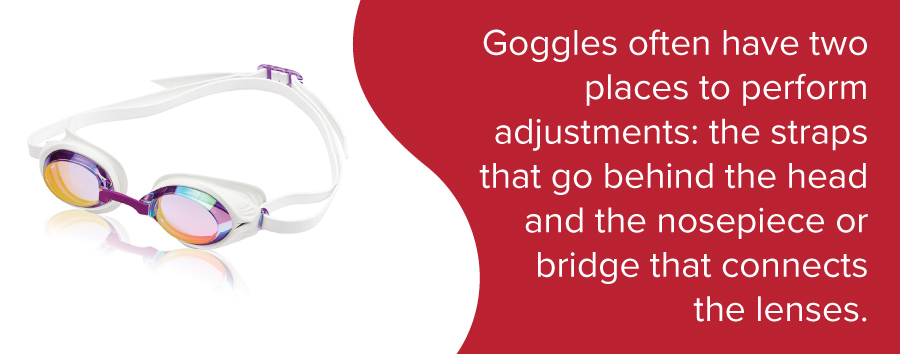
Goggles should fit snugly to your face to fully seal and keep the water away from your eyes. The adjustment system helps you get the perfect fit. Goggles often have two places to perform adjustments: the straps that go behind the head and the nosepiece or bridge that connects the lenses. Not all goggles allow for adjustments at the nose.
Inspect the adjustment system on the goggles to choose a system that works well for you. When buying goggles in person, adjust the goggles to see how easy the system is to use.
A buckle system is a common way to adjust the length of the strap to make the goggles tighter or looser. Some styles use a push-button method for quick adjustments.
The split-strap style allows for a better hold at the back of the head. This option allows you to wear one strap higher and one lower to prevent slipping. This style of strap works particularly well for quick turns and fast laps, as you don’t have to worry about the goggles shifting.
When adjusting the bridge area, choose a width that allows the strap to comfortably fit across the bridge. If you can’t adjust the strap wide enough, the lenses can’t fit properly on the eyes and won’t offer a tight seal. A bridge that is too wide also affects the seal, as the lenses tend to sit out too far on the face.
Play with both adjustment points to determine if a pair of goggles will fit you properly. If you can’t get the two adjustment points to work together to give you a good seal and a comfortable yet snug fit, try a different pair.
Swimming Goggle Tips

You’ve narrowed down the options, but perhaps you’re still not sure which goggles to buy. Sometimes it comes down to buying a few different pairs of swim goggles and putting them to the test in the water. If you’re not sure what type of goggles you want, start with a less expensive version to try them in a real-world situation.
Consider these additional tips when buying swimming goggles:
- Test with your cap: Swimmers typically wear their goggles with the straps over their swim caps. If you plan to swim with a cap, try on the goggles with the cap in place. This helps you test whether or not the two pieces work well together and feel comfortable. The cap can also affect the fit of the goggles.
- Consider the look: Function is by far the most important aspect of selecting your swimming goggles. You should never base your purchase solely on the color or appearance of the goggles. It doesn’t matter how great you look in the goggles or how fun they look if they don’t provide the protection you need. If your final goggle selection comes in different color options or you find multiple goggles that fit well, you can look at the color and appearance of the goggles as a tiebreaker.
- Understand men’s versus women’s goggles: You’ll find goggles designed for both men and women. The goggles typically come with the same features. The primary difference is the size of the frames and lenses. Women’s goggles may also come in more feminine colors, which may sway your decision.
- Buy multiples: You may find you like one pair of goggles in one swimming situation and another pair in a different situation. Buying multiple pairs of swimming goggles lets you account for varying swimming conditions if you don’t always swim in an indoor pool. It’s also a good idea to have a backup pair of swim goggles in your bag in case your main pair starts to leak.
- Shop online: Shopping for swimming goggles online lets you compare multiple brands and styles at once. You can often find a wide selection at an affordable price when you shop online. Look for an online swimming goggle vendor that allows you to return or exchange unused goggles if they don’t fit properly. This allows you to try on the goggles at home without being stuck with a pair that doesn’t fit well.
- Readjust at the pool: Once you make your goggle selection, test them out at the pool. If you notice water leaking into the goggles, play with the adjustment points to see if you can get a better fit to block out the water.
- Replace as needed: The longevity of swimming goggles depends on the quality and your swimming schedule. If you swim regularly, you can typically get about four to six months out of a pair of goggles before replacing them. After so long in the pool, the chemicals begin to break down the goggles and affect the seal, making them ineffective in keeping your eyes dry.
- Perform proper care: Extend the life of your goggles by properly caring for them. Rinse goggles after use to remove chemicals, dirt and other debris that can damage the materials. Let them dry completely, but keep the goggles out of the sunlight, as the UV rays are damaging. Never wipe the inside of the lenses on goggles with an anti-fog coating. This can scratch or remove the coating, making it ineffective.
Shop for Your Perfect Pair of Swimming Goggles
Now that you know how to shop for swimming goggles, check out our selection at The Lifeguard Store to find the perfect pair for your needs. We offer a wide range of styles, sizes and lens colors in swim goggles for kids and adults. Prepare for your next swimming workout with a pair of high-quality swim goggles with the features that meet your specific eye protection needs.
Learn More About Competitive Swimming:
- Getting Over a Bad Race
- How to Correctly Clean Your Competitive Swimsuit
- How to Choose a Women’s Technical Swimsuit
- How to Choose a Men’s Technical Swimsuit
- Eat Better to Swim Faster and Recover Quicker: the Ultimate Nutrition Guide for Swimmers
- Eating Before a Swim Meet
- Tips for Waking Up Early
- When You Want to Give Up
- Maximizing Energy


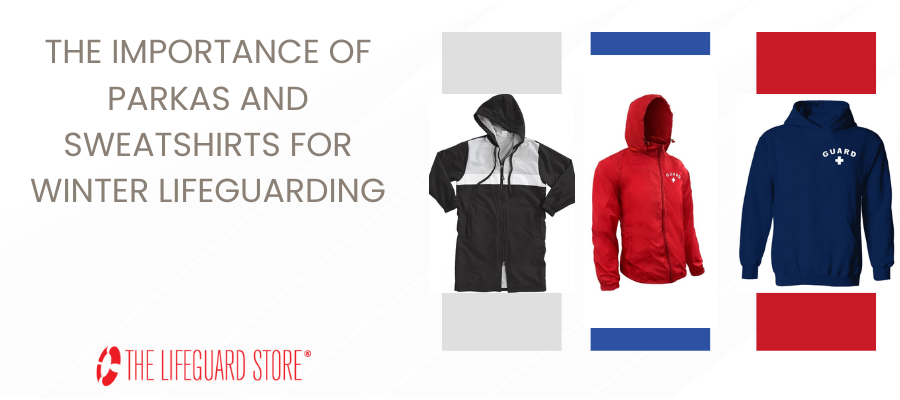
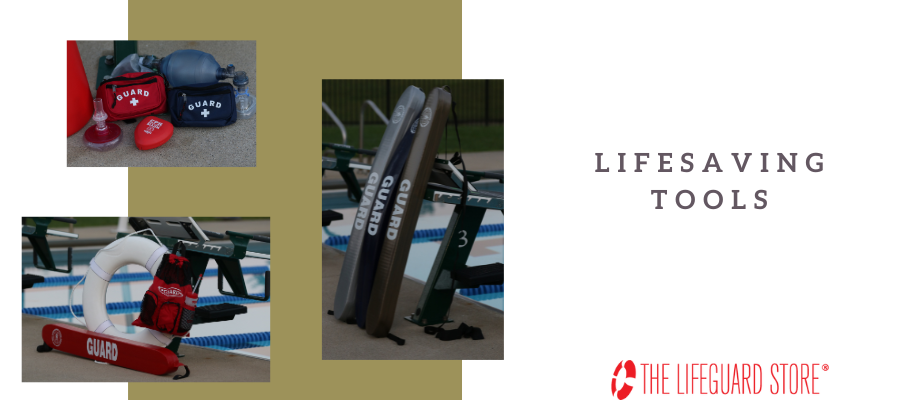
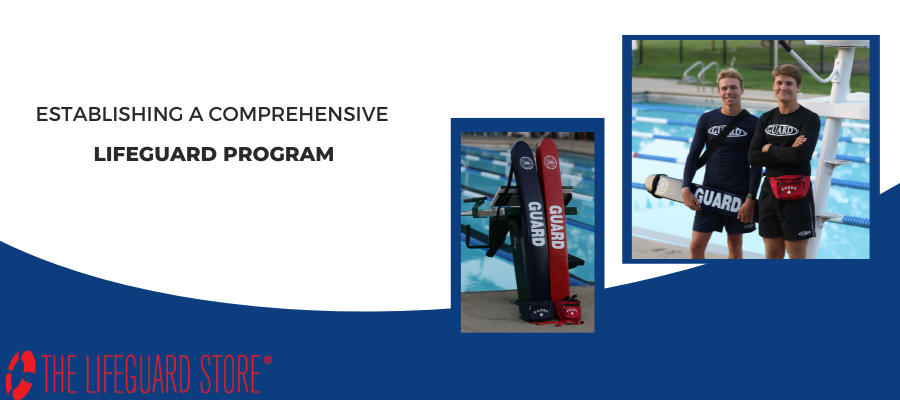
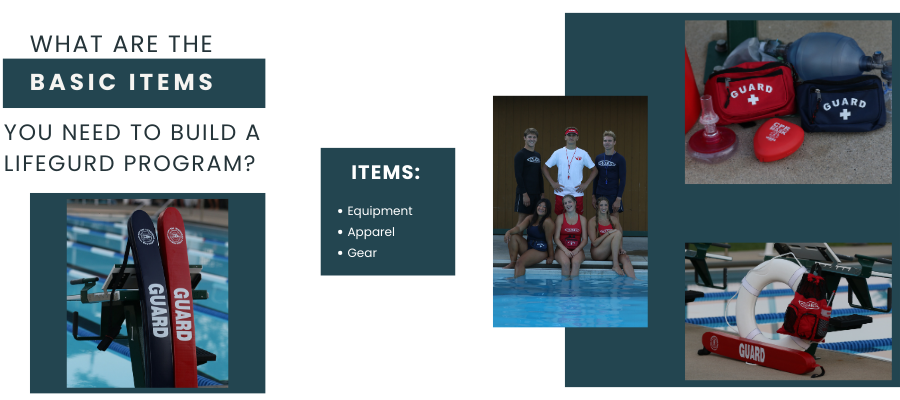
Leave a Comment
Your email address will not be published. Required fields are marked *